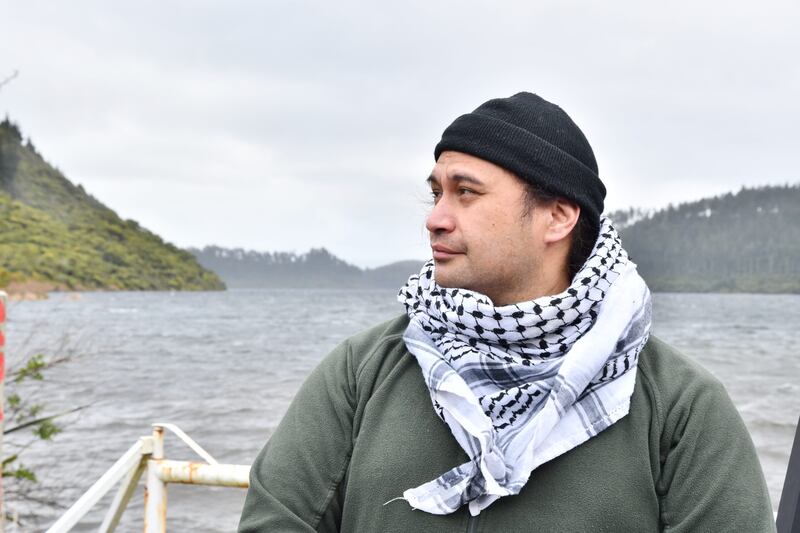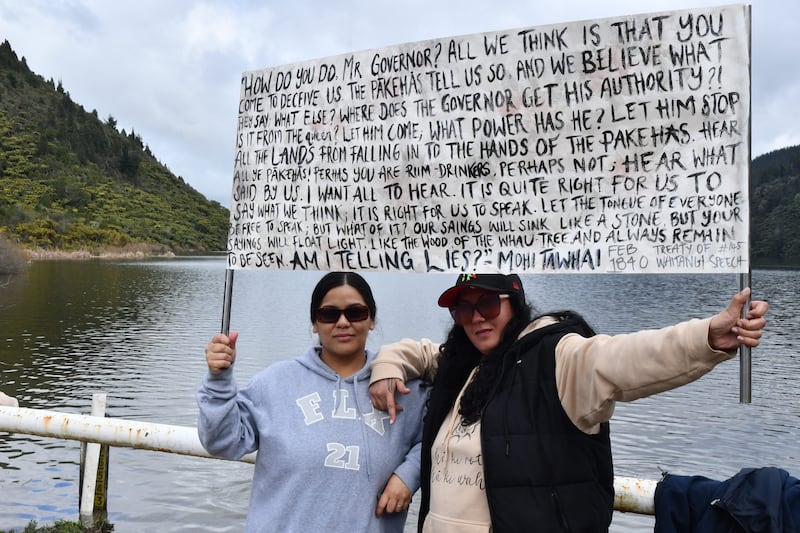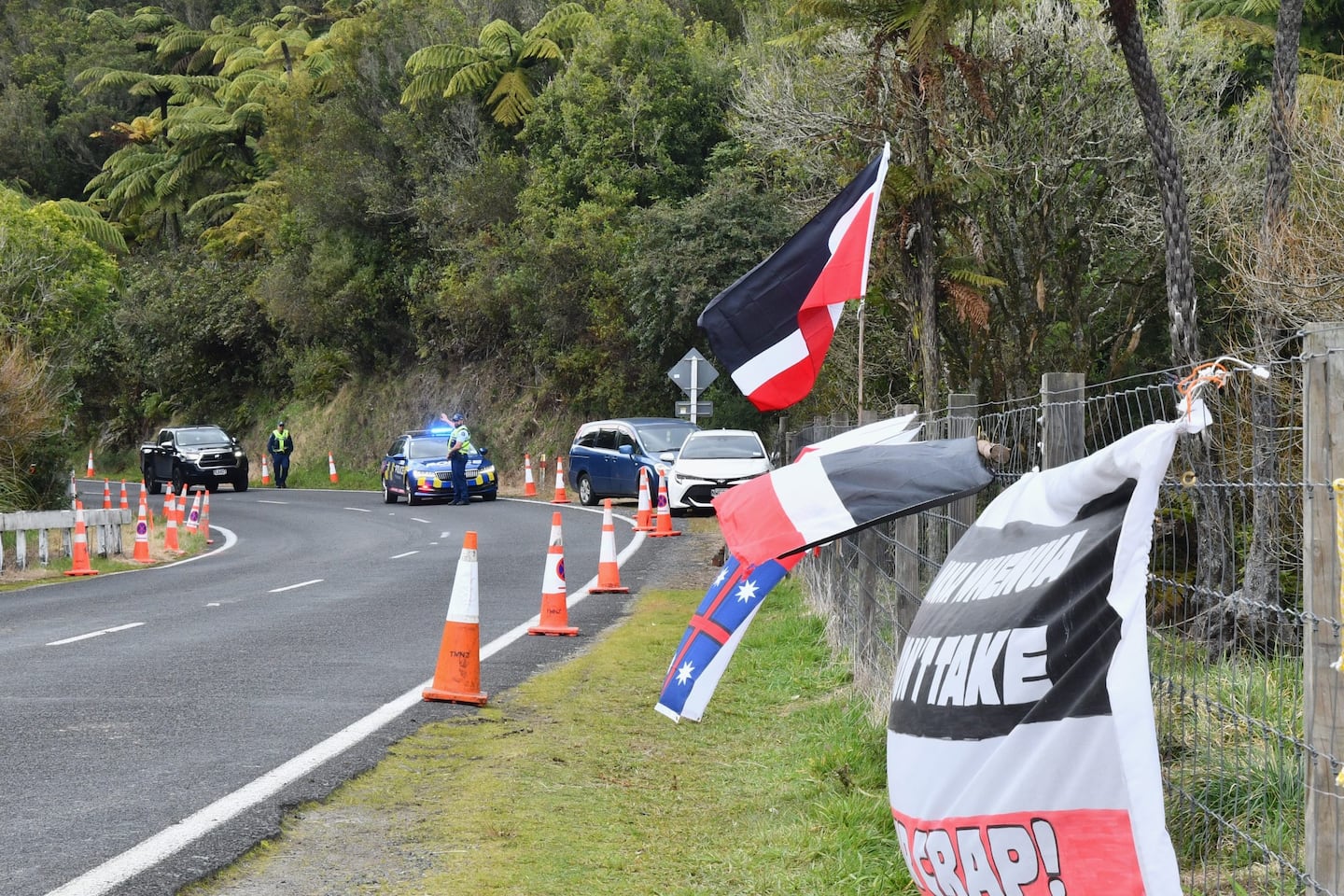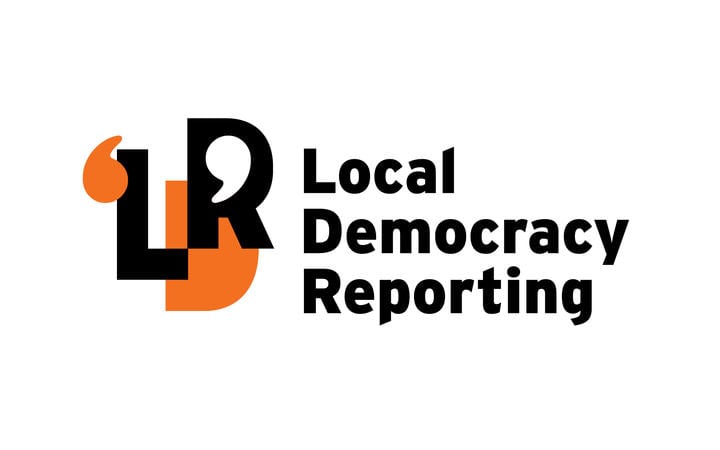About 100 people attended a hīkoi to wāhi tapu (sacred) Lake Rotokākahi on Monday in a stand against the route of a sewerage pipeline.
One man leading it said supporters came from across the North Island to join, and that they were referring to it as “another Ihumātao”.
Those marching say they believe the $29 million Tarawera Sewerage Scheme pipes being laid parallel to a section of the lake could risk environmental damage in a culturally significant area. Tūpuna (ancestors) were buried nearby during the 1886 Mount Tarawera eruption.
The site shut down in February after alleged incidents – including claims of a vehicle being driven at a contractor, verbal abuse and intimidation – prompted the Rotorua Lakes Council to seek an injunction against “interference” with the construction of the pipeline.
The application named the organiser of a January protest – the Lake Rotokākahi Board of Control – and “persons unknown” as respondents. The board denied involvement in the alleged incidents.
The injunction application was indefinitely adjourned – neither granted nor dismissed – a month ago.
The board acts as kaitiaki of the lake, which is iwi-owned and closed to the public.
Protests began again last week when work recommenced, this time under the eye of a council camera, and on Monday people held signs and flags in opposition to the scheme’s route as they journeyed from the Lake Tikitapu lookout point to the sacred lake’s edge.
Speaking to Local Democracy Reporting following the hīkoi, Te Whatanui Leka Skipwith, Tūhourangi, said about 100 people came from across the North Island to attend.

“They’ve been comparing what’s happening here to another Ihumātao, to another Bastion Point.”
“And so this is 2024 and we’re still out here doing this, fighting these machinations and policies and procedures that are put in place by councils and governments that aren’t willing to listen.”
Ihumātao was the site of a high-profile occupation protest in 2019, which drew in supporters from across the country.
He did not believe it could be called an occupation protest, however, as those involved were standing on iwi ground.
“So we’ll be sitting behind that fence line where the camera is, doing what we’re doing here, on that side there to ensure that we’re protecting the whenua and the environment.”
He understood work could not continue so long as people were on that land.
Among those at the hīkoi were Blair and Kenzie Moke.
Their koro, Mohi Tāwahi signed Te Tiriti o Waitangi in 1840, and it was his speech they held above their heads at the edge of Rotokākahi.

Kenzie Moke said being at the hīkoi was important to them as lakeowners. “I just believe we shouldn’t let any Pākehā dictate what we do when we’ve already given so much land, culture and our history”.
Council infrastructure and environment general manager Stavros Michael said there has been no physical interference to the scheme since contractors re-established at the site last week.
“Today’s hikoi impacted traffic management and has delayed the start of the works.
“Council reiterates the right to peaceful protest. The injunction application can be renewed on an urgent basis if necessary if there is conduct that obstructs or interferes with the works. The judge was clear on the council’s ability to proceed with works within the legal road corridor.”
Michael said the scheme was a result of “extensive community consideration over many years”. This included iwi input.
“Arriving at the preferred option followed careful consideration of all technical, cultural, financial and planning factors.”
The council and contractors were “doing their best” to complete the scheme efficiently to protect the health of the community and Lake Tarawera, he said, with minimum delay and at the lowest cost possible.
“We estimate legal costs associated with the injunction, as well as site security and contract progress delays will add about $200,000 to the scheme which would come at a significant cost to the Tarawera and the wider community.”
He said any extra legal action or work programme delays would create additional costs to the scheme, which it was “trying to avoid”.
A police spokeswoman said police recognised the lawful right to protest.
“Staff were aware of this protest and it was monitored to ensure public safety.”
There were no issues.
LDR is local body journalism co-funded by RNZ and NZ On Air.




